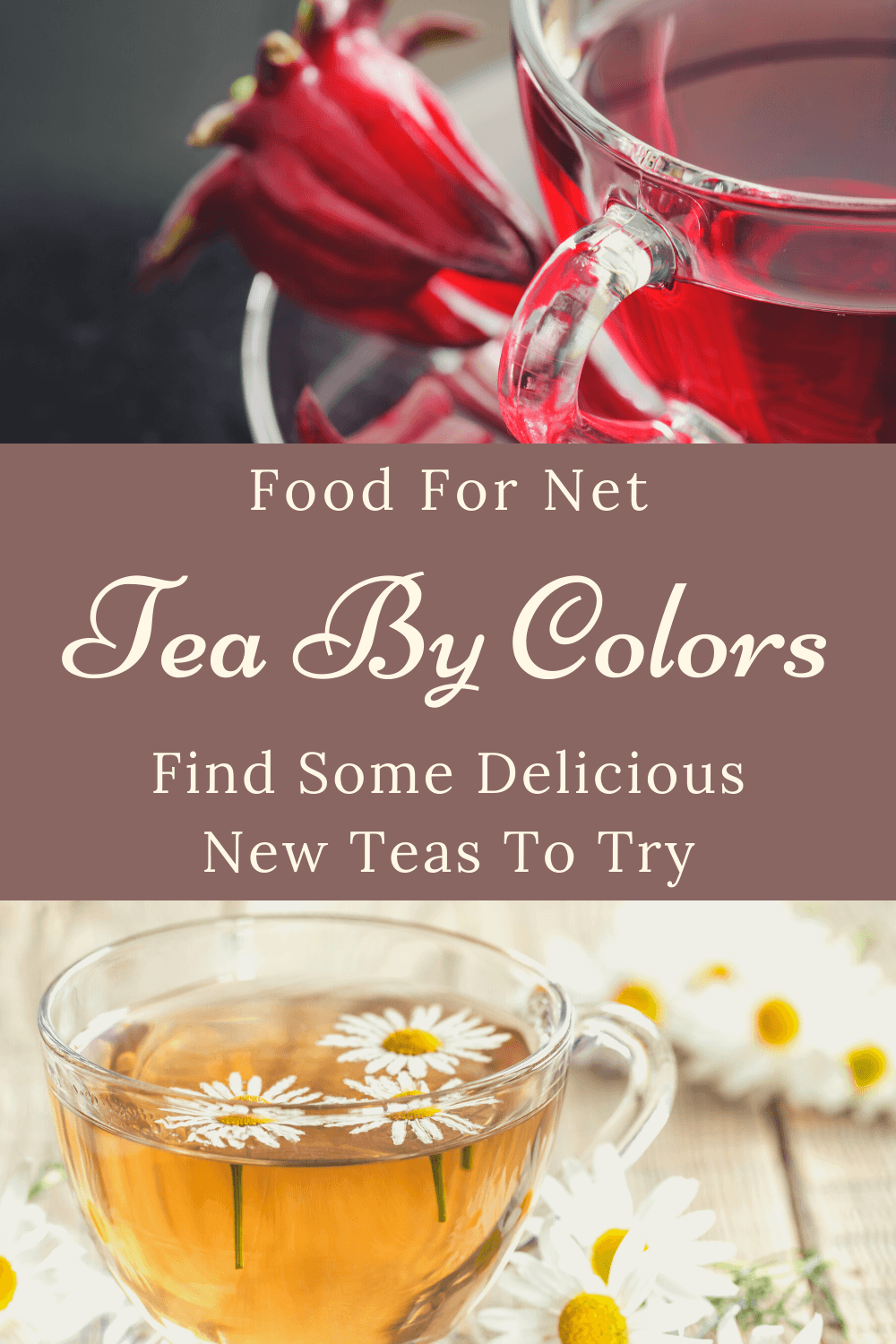
Tea is amazing. There are so many different types to choose from, especially if you don’t limit your definition to traditional tea from the plant Camellia sinensis. There are flower-based teas, herbal teas, fruit teas, and even spice teas, not to mention all the products that combine multiple types of tea into the same drink. With so much variation, talking about tea by colors just makes sense.
Breaking the teas down like this gives you the chance to see the range of options that are out there and how they compare to each other.
Although, as a word of warning, we’re not going to cover every single type of tea in this list. Trying to do so would be impossible. There are too many of them out there, not to mention all the teas that combine various flowers, herbs, and spices to create a well-rounded drink.
You’ll also find variations in the color and flavor of teas depending on the individual product. The growing conditions, variety of plant, and method of manufacture can all strongly affect the final product. This is one reason why it takes so much trial and error to find teas that you love.
Tea By Colors
- Red
- Hibiscus
- Rosehip Tea
- Rooibos
- Rose Tea
- Ashwagandha Tea
- Purple
- Violet Tea
- Green
- Green Tea
- Lemongrass Tea
- Eucalyptus Tea
- Olive Leaf Tea
- Orange And Brown
- Black Tea
- Hojicha
- Echinacea
- Cayenne Pepper
- Licorice Root
- Yerba Mate
- Greek Mountain Tea
- Yellow
- Yellow Tea
- Peppermint
- Elderflower
- Linden
- Osmanthus Tea
- Nettle Tea
- White
- White Tea
- Chamomile Tea
- Valerian Root
- Chrysanthemum
- Ginger Tea
- Honeysuckle Tea
Red
Hibiscus
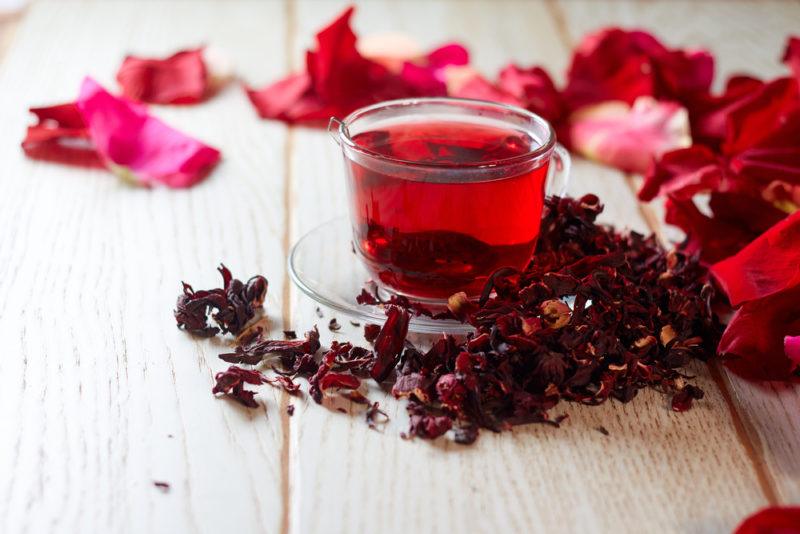
Hibiscus tea is made from the flowers of the hibiscus plant. It is a stunning type of tea with a bright red color and a sweet-tart flavor. It is a little like cranberry juice in that sense, except in tea form and with less sugar. With this flavor profile, the popularity of hibiscus iced tea isn’t surprising at all.
The bright color should tell you something important about the tea too – it’s high in plant-based compounds. This means that it may help to promote health in many ways.
Rosehip Tea
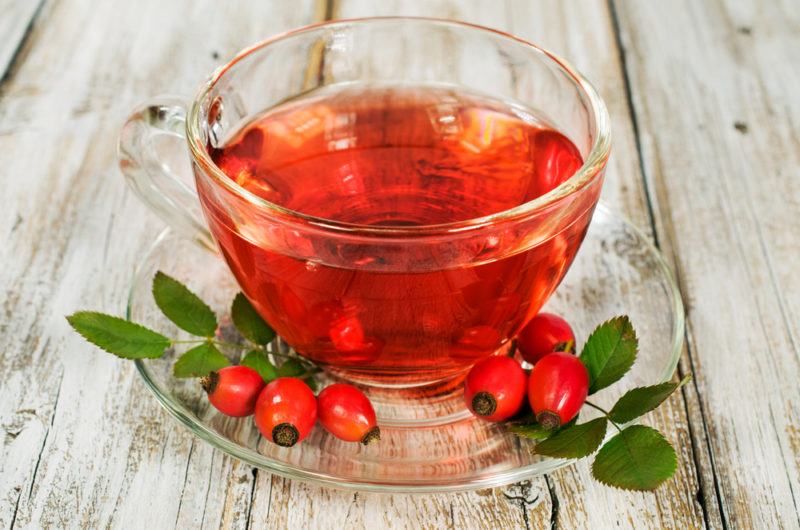
Rosehips are small fruit-like structures that are found on the rose plant, just below the petals. These form the basis of rosehip tea (the tea is distinct from rose tea, which tends to be made from rose petals instead).
Rosehip tea tends to have a slightly sweet floral flavor, one that isn’t overbearing. There is also a notable tart aftertaste that helps the tea to stand out.
Rosehips also contain antioxidants, so the tea might help you to stay healthy. However, the specific compounds present and flavor profile may vary depending on the rosehips that you’re using. After all, there is no shortage of different rose species to choose from.
Rooibos
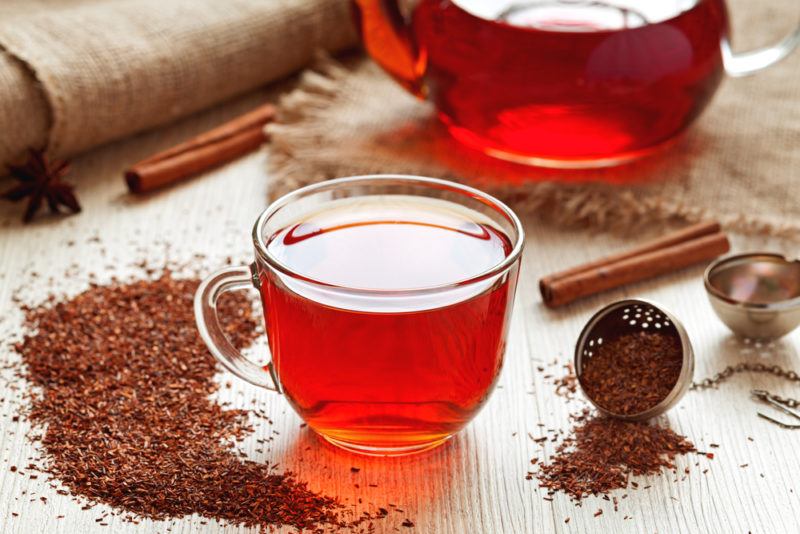
Rooibos tea has a distinctive red color, along with a gentle, floral, and somewhat sweet flavor profile. Longer brewing times bring out woody notes as well and create a more full-bodied drink.
The tea is created from the species Aspalathus linearis, which is an African shrub. It tends to be prepared and consumed just like black tea. But, unlike black tea, rooibos is herbal and is entirely caffeine-free.
Interestingly, rooibos is also often fermented. This creates the familiar color of the tea and intensifies the flavors. Fermentation is common for black tea but it isn’t the standard practice for herbal teas.
A green version of the tea can be found too. Green rooibos hasn’t been through fermentation and has a notably different flavor than regular rooibos.
Rose Tea
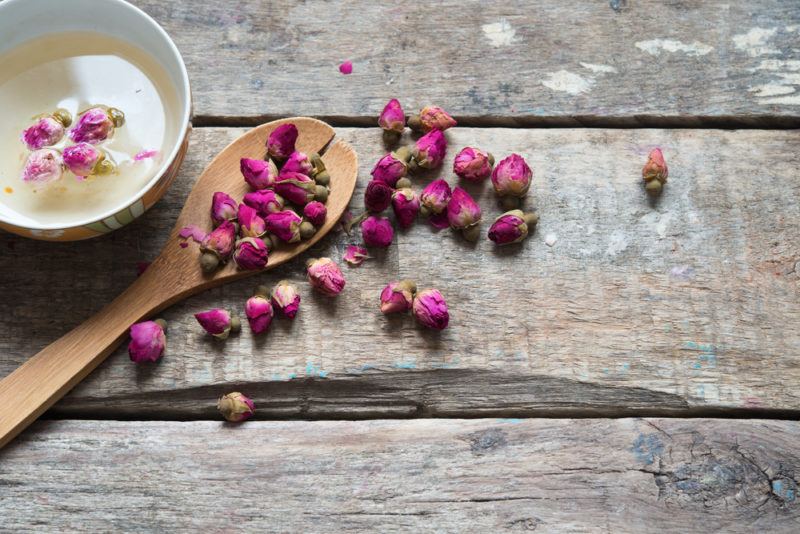
Rose tea tends to be red or pink. It is made using the petals or buds of roses.
The tea tends to have a light and subtle floral taste. But, the flavor and color of the drink is strongly influenced by the specific type of roses that you use. Some roses impart a distinct sweetness to the tea, while others are bitter instead.
Buying rose tea is the easiest way to make sure that you end up with a pleasant-tasting drink. There are many brands to choose from. Some will just rely on roses, while others will use other ingredients as well.
You can also make rose tea at home. If you do so, be sure to use roses that are pesticide-free and don’t have any bugs on them. You’ll need to carefully wash the roses before you use them too. While the tea can be made from fresh rose petals, dried ones are normally used instead.
Ashwagandha Tea
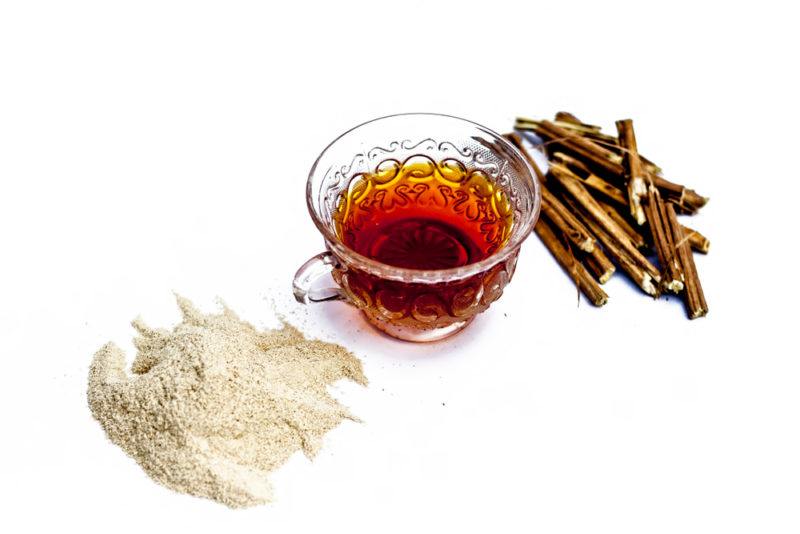
The color of ashwagandha tea tends to vary somewhat, often including brown, red, or orange tones. Ashwagandha has a long history of use in traditional medicine and is most strongly linked to decreasing stress and improving the immune system. These effects may also help to promote good mental health.
The herb is also popular for men. It is thought to help in a variety of areas, including fertility, testosterone levels, and libido.
The catch is that the tea itself doesn’t taste all that good. It is sometimes described as being a little like drinking dirt, which isn’t an attractive idea at all. Adding in some sweetener, along with other herbs or spices can help in this area, giving you a better balance of flavors.
Purple
Violet Tea
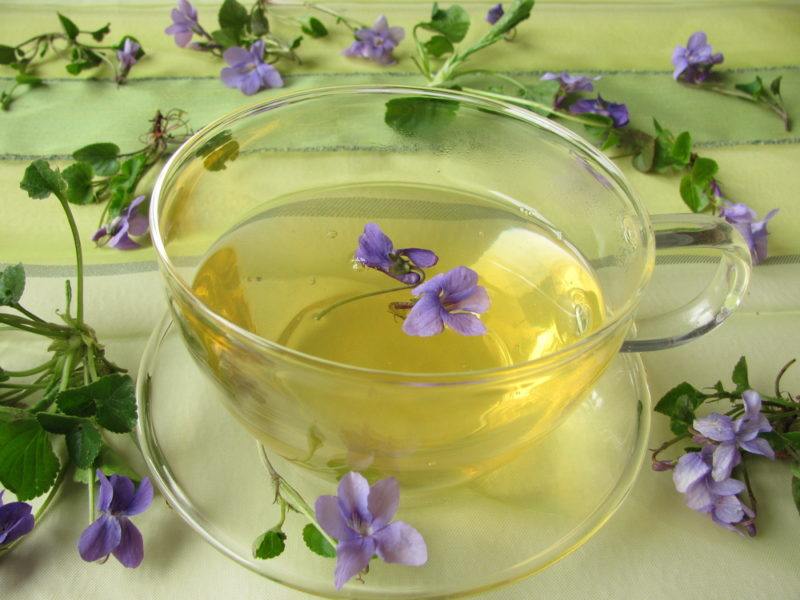
Violets can be used to make a rich purple tea. It can be an appealing tea to try, as sweet violets commonly grow in the wild. You can pick, wash, and dry the flowers, then make this tea yourself.
Appearances, however, can be deceptive, as the flavor of this tea isn’t nearly as vibrant as the color suggests. It is a fairly dull choice instead and ends up tasting a little like spinach. You can add some lemon juice to kick it up a notch. Even then, the final flavor is subtle.
Green
Green Tea
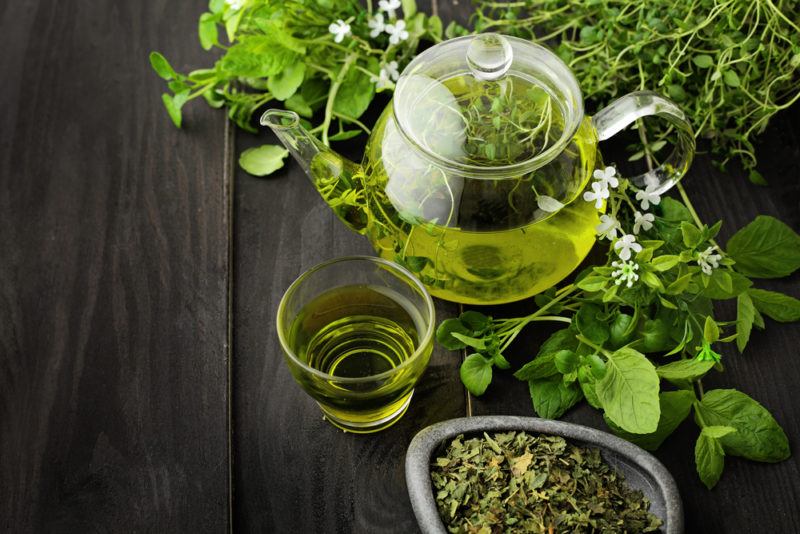
Green tea isn’t as widely consumed as black tea, but it’s generally thought to be much healthier. Studies consistently show that drinking green tea regularly can help in areas like brain function and decreased heart disease risk. Green tea could even help you to live longer.
The flavor of the tea can vary somewhat, but it tends to have a grassy flavor with a slight bitterness. For most people, green tea is an acquired taste. Green tea blends can make the tea more palatable or you can add other ingredients yourself.
How you brew the tea will affect the flavor too. Green tea should be a little bitter, but not overwhelmingly so. If the bitterness is strong, then you’ve been storing or brewing the tea wrong.
If green tea is too overwhelming, you can turn to matcha green tea instead. While there is still a grassiness to the flavor profile, matcha tends to be easier to enjoy. You can also add honey and milk to create a sweet and creamy drink that isn’t overwhelming at all.
It’s also worth mentioning that not all green teas are actually green. Confused yet? Well, the term green tea is based on the tea leaves and their level of oxidation. The color of the tea, however, can change based on the way that the tea is processed.
For example, Hojicha green tea is a Japanese tea that is made by roasting the tea twigs, rather than tea leaves and the brewed tea is brown.
Lemongrass Tea
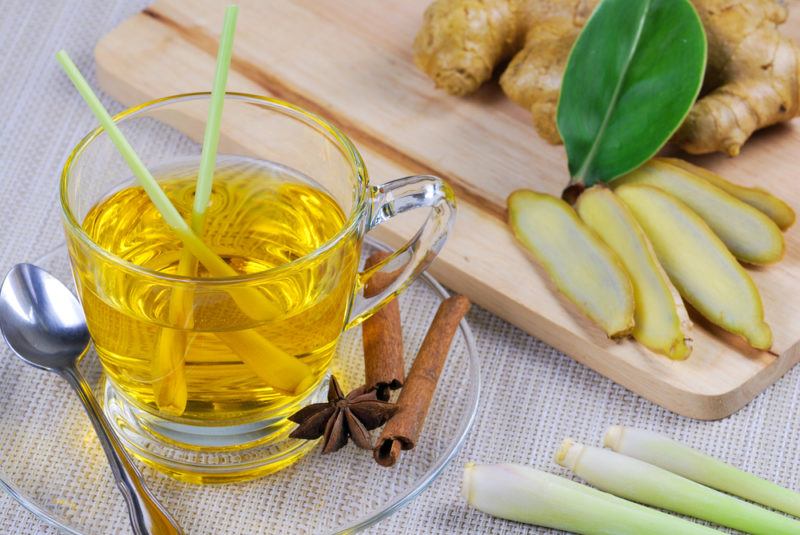
If you love the flavor of lemon but find that it is a bit too intense, lemongrass tea could be an alternative approach. Not surprisingly, the tea is made from the herb lemongrass. You may be able to find lemongrass tea bags, but if not, it’s easy to make the tea by steeping lemongrass stalks in hot water.
There hasn’t been much research into this type of tea, but it may help reduce inflammation. It is also a calming drink that has an enjoyable flavor.
Eucalyptus Tea
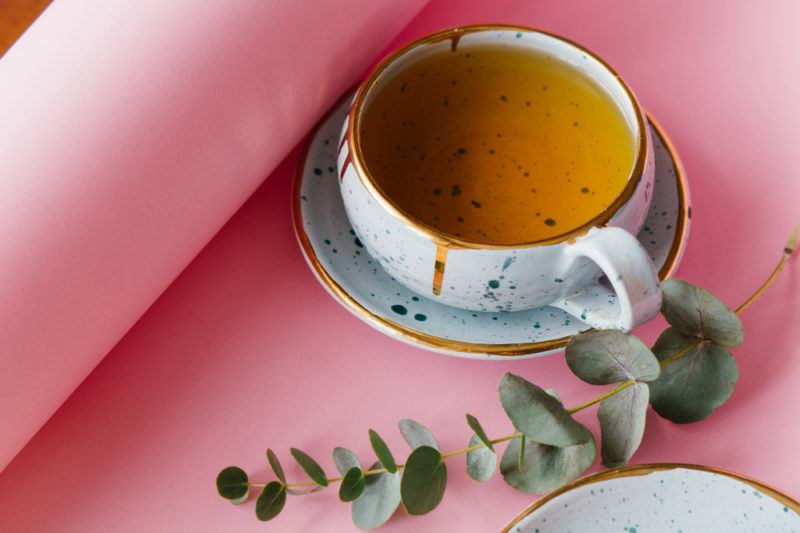
This tea can end up having a light green or slightly brown color, but either way, it has a distinctive eucalyptus scent and flavor that many readers will be familiar with.
The tea is made from the crushed leaf of the Australian blue gum tree, which is the common name for a eucalyptus variety. You can easily find the tea in local stores or online.
Various benefits of the tea have been proposed, including the potential to help treat asthma and diabetes. While those effects are largely unproven, a simpler idea is to use eucalyptus tea as a decongestant when you’re dealing with a cold or the flu.
Olive Leaf Tea
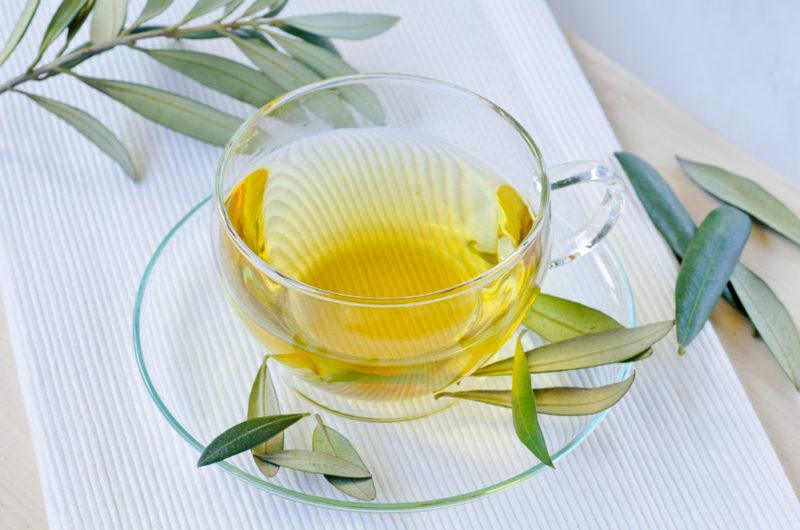
Olive leaf tea could end up being as good for you as green tea. It is certainly rich in antioxidants and phytonutrients, and also contains some interesting compounds that are specific to olives and olive leaves. Some of those compounds have been linked to health benefits – to the extent that you can find olive leaf extracts and supplements.
While there has been much more research into the benefits of green tea, olive leaf tea has the advantage of being caffeine-free. This makes it perfect for anyone sensitive to caffeine. The tea also ends up being ideal as an evening drink.
The flavor of the tea tends to be mellow and mild, which creates a calming drink. Some people add a little honey or lemon to make the flavor combination more interesting, but this isn’t essential.
Orange And Brown
Black Tea
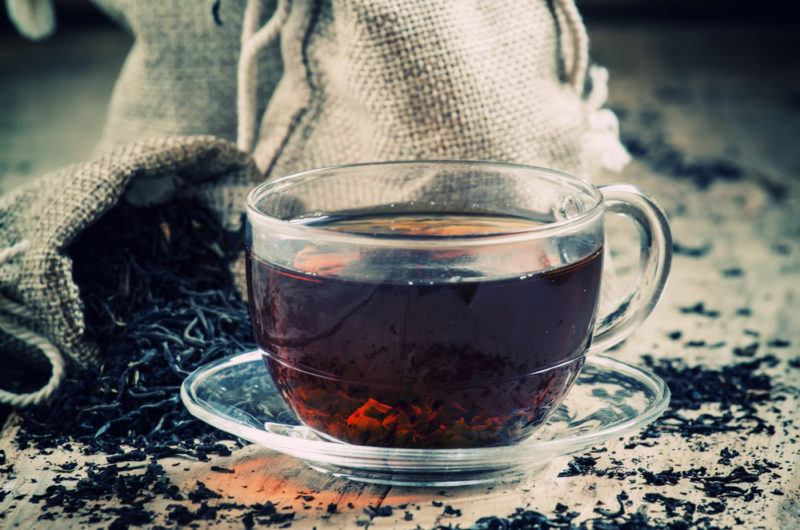
Black tea gets its name from the color of the tea leaves, which are dark due to oxidation. This often contributes to a robust flavor in the tea.
Despite the name, black tea isn’t typically black when it is brewed. Instead, most black teas fall somewhere between orange and brown. The color tends to be deeper when the tea leaves themselves are darker or when the brewing time is longer.
Hojicha
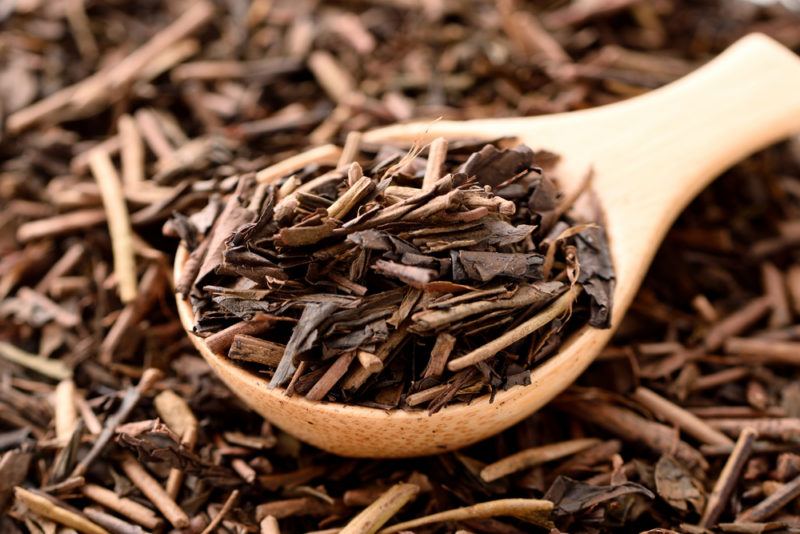
Hojicha is an interesting type of Japanese green tea. It’s unusual because the brewed tea isn’t green at all. Instead, it is a dark brown color, with a sweet almost caramel taste.
The color and flavor come from the way the tea is made. Rather than relying on steamed tea leaves, Hojicha is made using roasted tea twigs.
This process also creates a tea that is very easy to brew. You’re not going to have any issues if you use a high temperature or brew the tea for too long. Both practices can end up making the tea taste even better.
Finally, this tea is low in caffeine. The combination of features makes it an ideal choice for new tea drinkers, including anyone who finds that regular tea is too harsh.
Echinacea
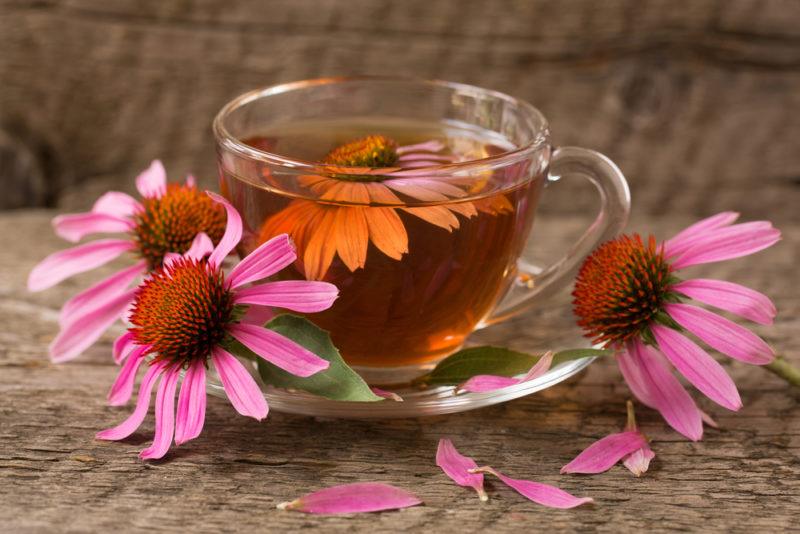
Echinacea is largely a flower-based tea, although it can be made using the roots of the plant as well. This is one of many teas that you can easily buy in the form of tea bags or loose leaf tea, or make yourself.
Echinacea is often thought to be good for decreasing inflammation and improving immune system function. This could make it a good choice for fighting off a cold or the flu. Indeed, echinacea has history in Native American medicine, which reinforces the potential for health benefits.
The flavor of the tea often reminds people of pine and there are some floral notes present too. The flavor profile isn’t ideal, not by any means. Many people don’t enjoy echinacea tea on its own and instead choose to add in other ingredients to make the tea taste better.
There are various options for doing so. Combining echinacea with peppermint and lemongrass works well. You could also focus on other herbal options that have a strong flavor like ginger.
Cayenne Pepper
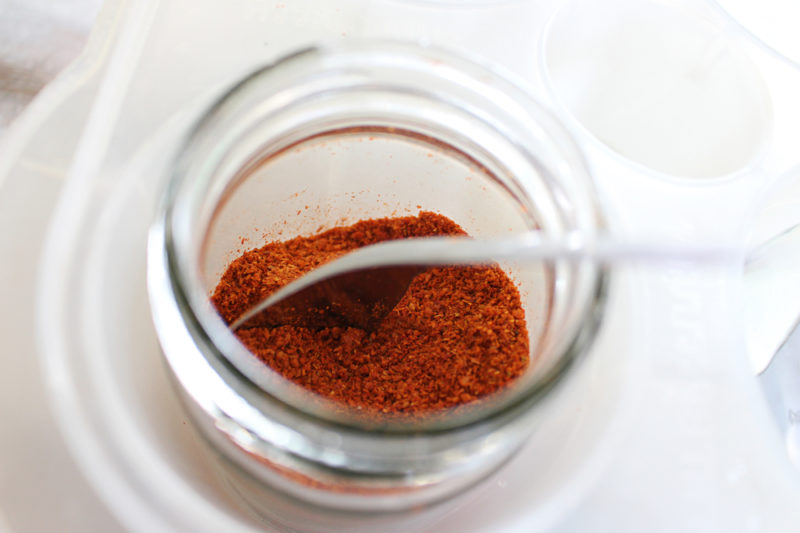
Cayenne pepper tea is an unusual idea, but the drink does provide an alternative way to access the healthy compounds in cayenne pepper. And, why not? If you love the flavor of cayenne anyway, including it in a hot drink could be just the ticket.
The main advantage here is the compound capsaicin. This has been linked to decreased inflammation, which could be enough of a reason to drink the tea regularly.
There are also beliefs that spicy foods and drinks are good for health too. They might help to improve circulation, for example, decrease depression, and promote weight loss.
Plus, if nothing else, using cayenne pepper is a creative way to make an interesting hot drink. The tea itself uses cayenne pepper as the main ingredient, along with water and fresh lemon. It’s not difficult to make, although the bold flavor profile may take time to get used to.
Licorice Root
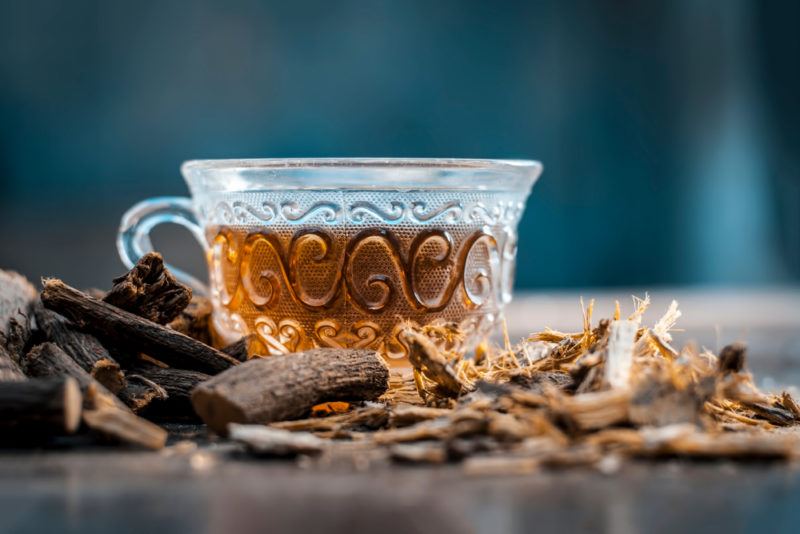
Like many other root teas, licorice root tea ends up having a light brown color that is almost amber. Licorice root also happens to be one of the most well-known root teas, one that has been linked to many possible benefits.
Licorice root is even thought to be one of the oldest herbal remedies in the world, which should provide an indication of its potential.
Suggested benefits of licorice root include the ability to decrease acid reflux, to reduce hot flashes, and to soothe coughs. Licorice root tea is a common choice for people who have colds, as the tea can help with symptoms. It may even help to fight viral and bacterial infections.
However, licorice root is something to be wary of, as it contains glycyrrhizin. This compound can be problematic in large doses, potentially leading to higher levels of cortisol and fluid imbalances. As such, it’s best to have licorice root tea periodically, rather than drinking multiple cups of it each day.
Yerba Mate
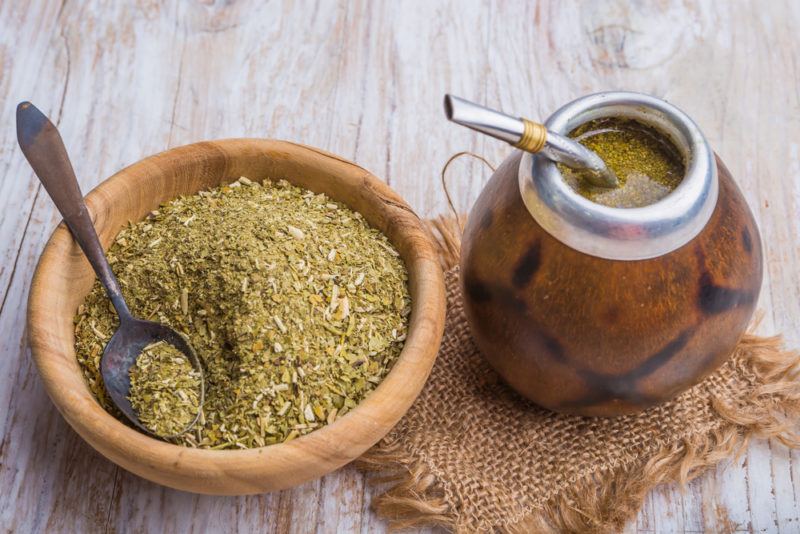
Yerba mate is easily the most interesting type of herbal tea out there. It comes from the species Ilex paraguariensis and is made by brewing dried leaves and sticks from this species in water.
One unusual thing is that the tea is traditionally consumed through a filter straw and served in a gourd. The straw means that you can enjoy the tea without getting bits in your mouth.
Yerba mate’s other unusual feature is its caffeine content. The tea doesn’t contain as much caffeine as coffee, but it contains more than regular tea. And, don’t forget, yerba mate is a herbal tea. It’s very unusual to see caffeine in any herbal tea.
The caffeine content of the tea is one reason that it is popular. Advocates of the tea claim that yerba mate provides an energy boost and increased focus, without the jitteriness that often comes with coffee. You’ll need to experiment to find out whether you experience that same effect.
Greek Mountain Tea
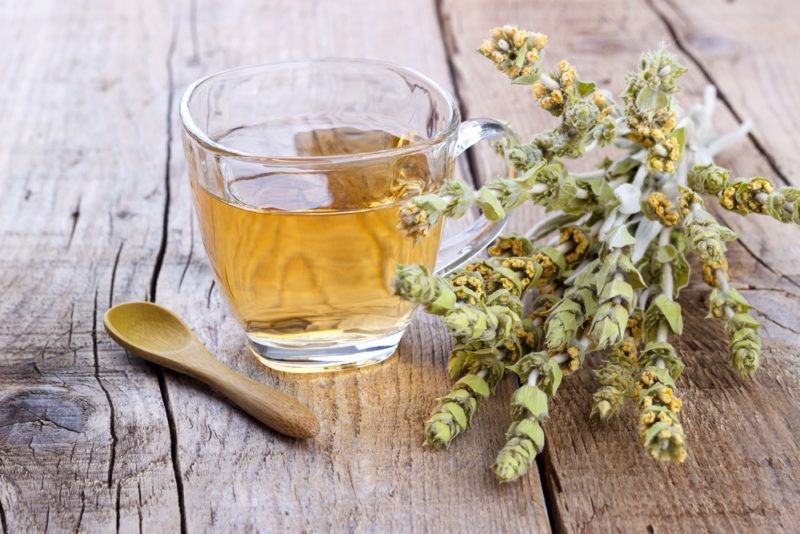
We could go on and on talking about orange and brown teas, as this is easily the most common color for tea. The pattern isn’t surprising either, given that so many teas rely on roots and dried leaves. While there isn’t the space to cover every option, we do want to talk about one more – Greek mountain tea.
This tea has a long history in Greece, stretching all the way back to the time of Hippocrates. It is harvested from Sideritis plants. These grow on elevations of more than 3,200 meters on rocky mountainsides, so it’s easy to see where the tea got its name from.
There are other names for the tea too, with many parts of Greece having their own regional terms. You’ll also hear it called shepherd’s tea sometimes, as the tea was a common choice for shepherds who tended their flocks on the mountains.
Like most herbal teas, Greek mountain tea is thought to offer many health benefits. This isn’t surprising, as the tea is high in antioxidants and other potent plant-based compounds. The appealing flavor and lack of caffeine can make this a good alternative to green tea.
Yellow
Yellow Tea
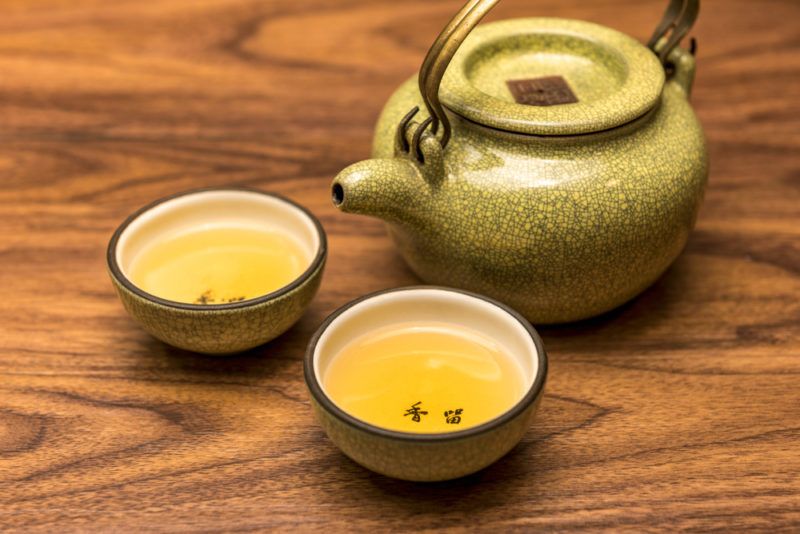
The first choice here is literally yellow tea. By this, we mean tea that comes from the plant Camellia sinensis and has a yellow color when it is brewed. You might not have heard about this type of tea before, as it is rare.
Yellow tea also goes by the name Huang cha. It is a type of Chinese tea that is thought to have once been only consumed by emperors. These days, anyone can drink the tea, if they can find it. Yellow tea is only produced in a small part of China, so the global supply is never large.
The tea itself has a moderate flavor that isn’t strong nor weak. It has a floral quality too, despite being made from tea leaves.
Yellow tea may be even better than green tea for health, as it contains a large number of antioxidants and polyphenols.
Peppermint
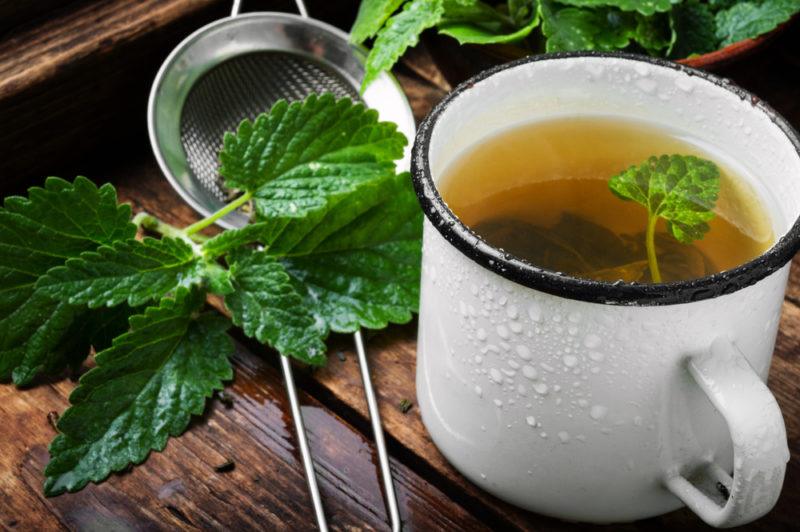
Peppermint tea tends to have a yellow-brown color and, not surprisingly, it tastes like peppermint. The tea is unusual as it tends to be energizing, even though it doesn’t contain any caffeine. The tea may even be able to help people to think more clearly and concentrate.
There aren’t many energizing drinks that are low in caffeine and low in sugar, so peppermint tea really is powerful.
But, it isn’t relevant for all situations. You probably don’t want the tea if you’re trying to wind down. Some people also find that peppermint tea aggravates acid reflux symptoms. As a result, the tea may be more appealing during the day than in the evening.
Elderflower
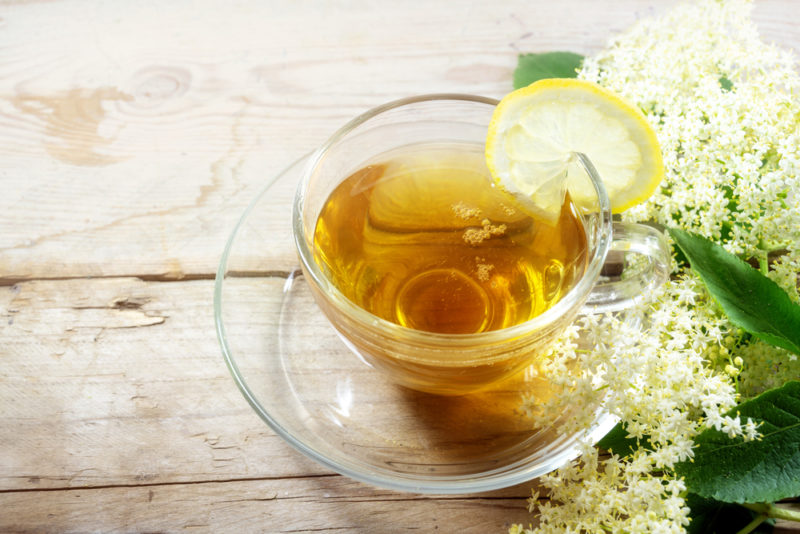
If you love the flavor of other elderflower products, like elderflower wine and elderflower lemonade, then elderflower tea could be another good choice. The tea retains the characteristic flavors of the flowers but tends to be less sweet than other choices.
Elderflower tea may also be healthier, as there aren’t any added ingredients to worry about. As with most types of herbal tea, you can make elderflower tea simply from dried elderflower blossoms.
You can even forage for the flowers yourself if some are growing in your local area. If you do so, make sure to focus on the best quality blossoms, ones that aren’t likely to be contaminated and are bug-free. This is important, as elderflowers tend to wilt and lose their aroma when they are washed, so you won’t be able to wash any bugs off.
The tea ends up being a lovely yellow color and tastes just as good as it looks.
Linden
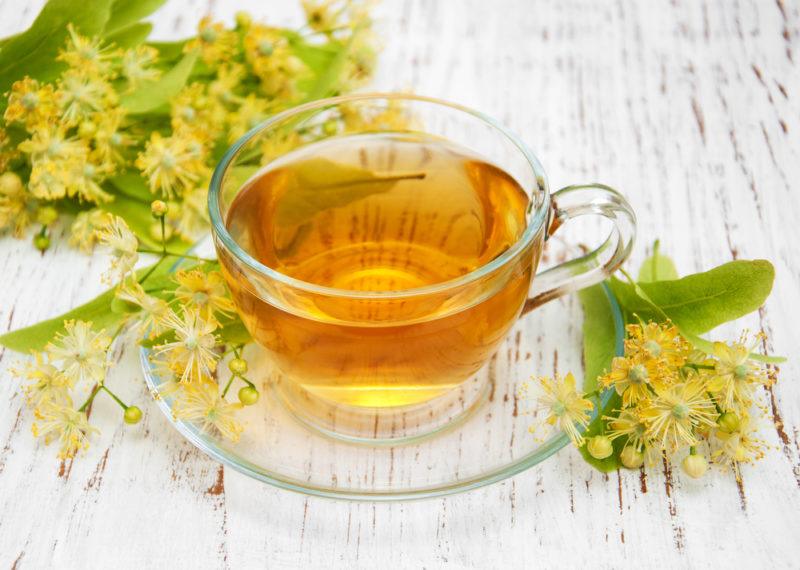
Not surprisingly, linden tea comes from the linden tea, which grows in Europe, Asia, and North America. The tea is often made from linden flowers, which are dried and then steeped.
The tea has a sweet and floral flavor, one that tastes good on its own. This means that you can skip any additional ingredients like honey, other herbs, or flowers.
The flavor isn’t the only reason for trying linden tea. The tea also has calming properties. It is sometimes used as a way to get to sleep faster or to help reduce anxiety.
Some people choose to make the tea using the leaves and roots of linden, rather than just the flowers. Doing so can provide you with even more nutrients, while also creating an interesting balance of flavors.
Osmanthus Tea
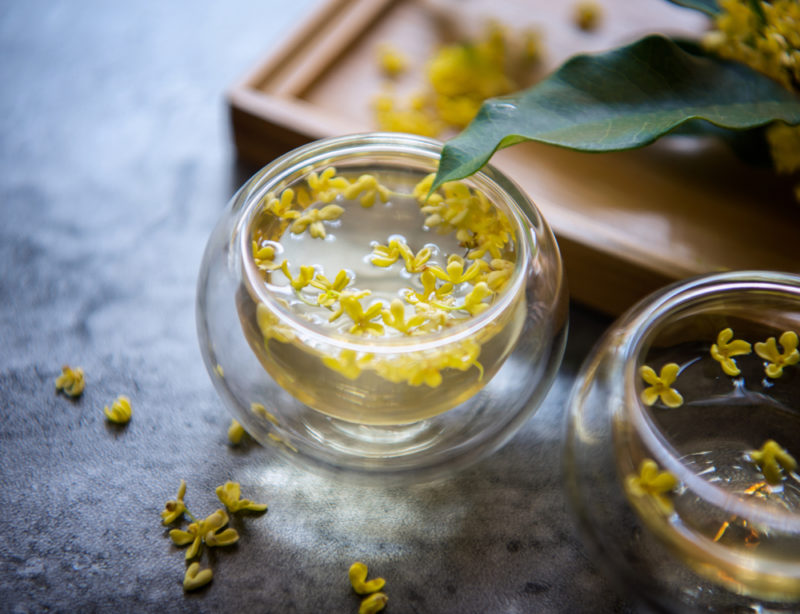
Osmanthus is another floral tea, one that hails from southern China. It is made from tiny yellow-gold flowers from the osmanthus plant.
The tea is interesting because it doesn’t look very interesting at all. The flowers don’t even cause a dramatic color change in the water, which might make you think that this will be a subtle tea.
Yet, in practice, osmanthus tends to have a strong flavor and scent. When brewing the tea, you’ll end up filling the room with a sweet and fruity aroma, while the tea itself also has a bittersweet edge to it.
Nettle Tea
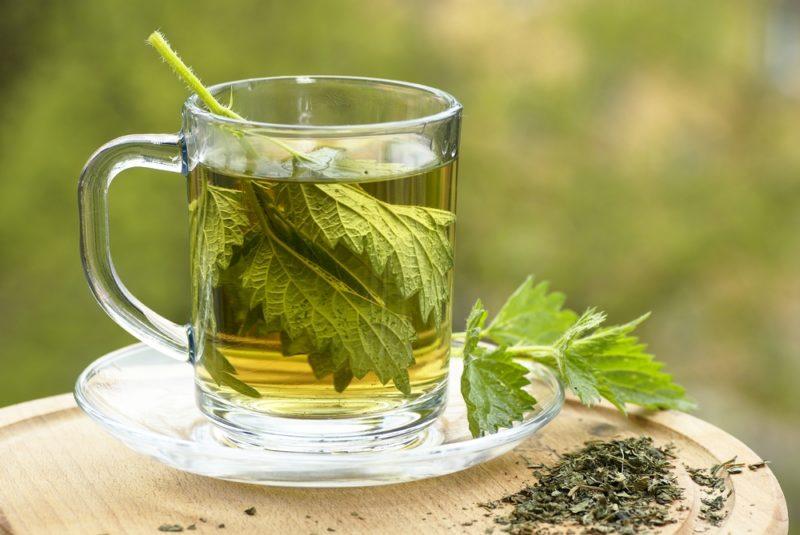
This herbal tea is made from the stinging nettle plant, specifically its roots and leaves. The tea is often thought to be powerful for health, partly because it is high in many nutrients and phytochemicals.
The tea has also been linked to positive outcomes for people with an enlarged prostate and may also help to manage symptoms of a cold or flu. You may see nettle tea promoted as a general option for detoxing, although there is less evidence for this effect.
The tea has a pleasant rich herby flavor that makes it delicious on its own or in a blend with other herbal teas.
Still, there is one limitation. Nettle tea is sometimes linked to side effects and may not be safe for pregnant women. So, as always, be sure to talk to your doctor before starting on a new type of herbal tea.
White
White Tea
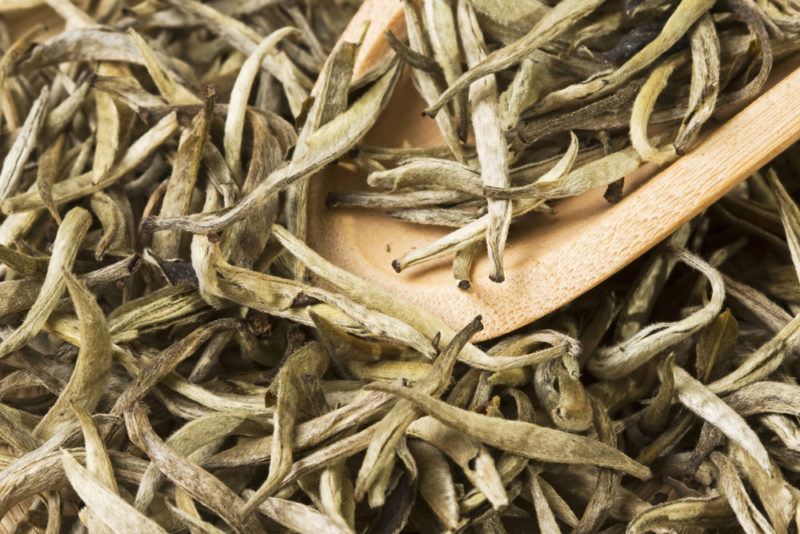
White tea comes from the same plant as black tea and green tea. The difference is that white tea has been through very little processing. The tea leaves are also harvested quite early, before the leaves have opened fully.
The tea leaves go through less oxidation than you find with black tea and green tea. This leads to a fresh and delicate tea that doesn’t have much color at all.
There are various types of white tea on the market and they all have their own flavor balance. The tea is often lower in caffeine than black tea or green tea, but this isn’t always the case. There is always variation from one product to the next and some white teas may even have more caffeine than some black teas.
Chamomile Tea
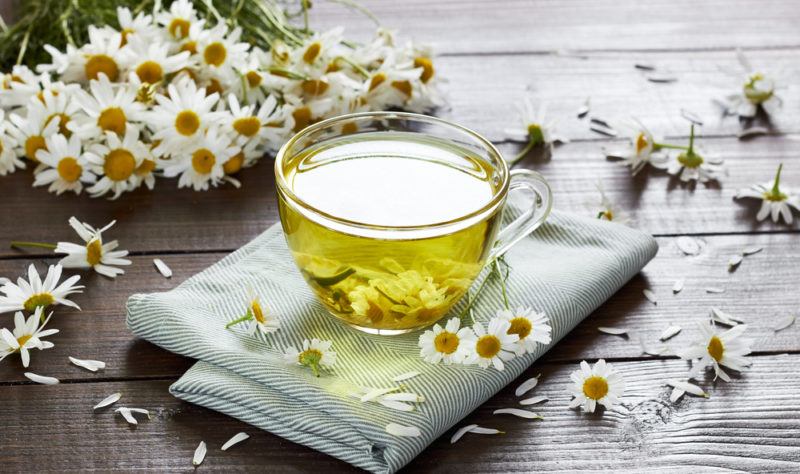
Chamomile is one of the most famous types of herbal tea, partly because it is used as a way to calm down and to promote sleep. It can also help decrease stress and, as a herbal tea, it is naturally caffeine-free.
The flavor of the tea is reminiscent of honey, although there is a bittersweet aspect to the drink too.
Some people enjoy the chamomile on its own, while others prefer blends that include other ingredients as well. Blends can end up with a more appealing flavor. They also offer benefits from multiple herbal teas at the same time.
Valerian Root
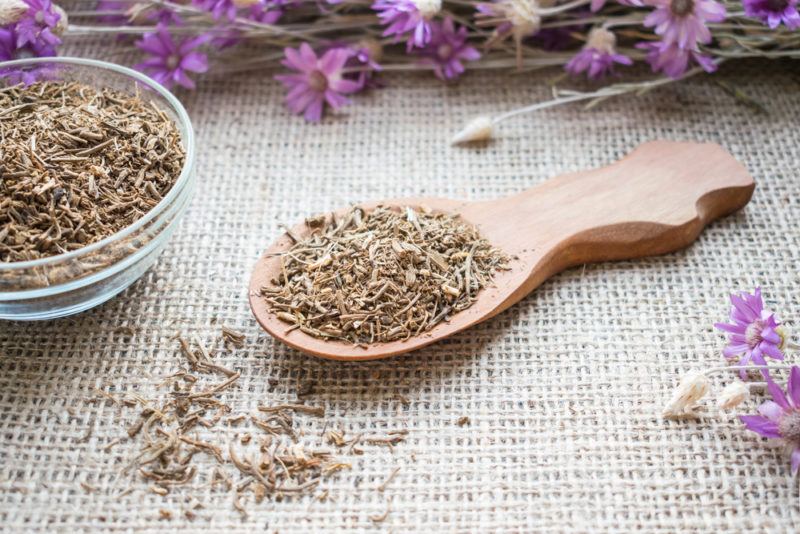
Like chamomile, valerian root tea is associated with decreased stress and better sleep. The tea may also help symptoms of menstruation and menopause, including cramps and hot flashes.
The tea tends to have a distinct woodsy flavor. This becomes more intense with longer brewing times. Longer brewing times may provide more benefits from the tea too, as you’re infusing more compounds from the root into your drink.
While valerian root can be appealing, the tea does have some side effects. Some people feel groggy next day if they use valerian tea to help them to sleep. The tea can also cause side effects like headaches and stomach problems.
Finally, the tea can interfere with some medications. If you’re taking any type of medication, check with your doctor before using this (or any) herbal tea.
Chrysanthemum
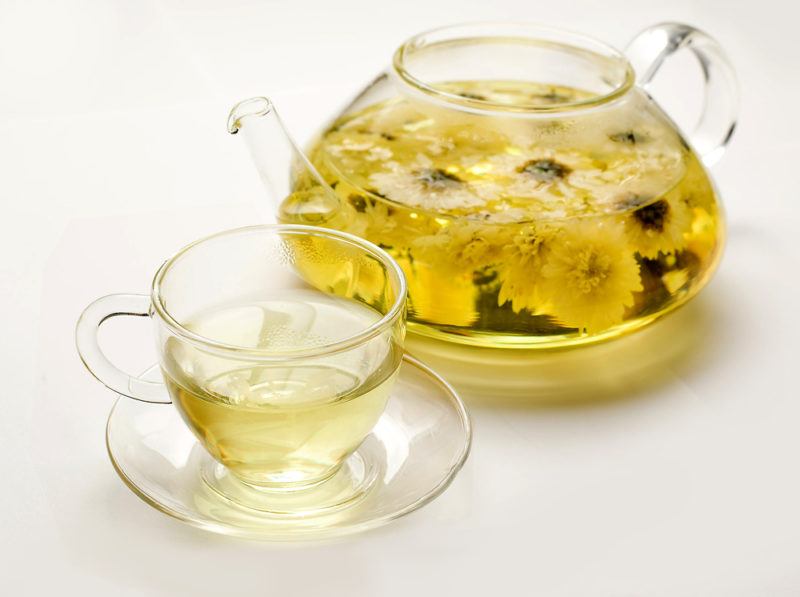
As the name suggests, chrysanthemum tea is made from chrysanthemum flowers. The tea is very easy to make. You’re simply pouring hot water over the dried flowers and allowing the flowers to seep.
The end result is a light and floral tea that is slightly sweet. The tea does have a slight herbal flavor, similar to the herbal tones that you find with chamomile tea, which may be off-putting. Still, this is easy to get accustomed to and the herbal tones can be offset by using sweetener in your tea.
Chrysanthemum tea is thought to offer various health benefits too. However, the evidence for these benefits is very limited.
Ginger Tea
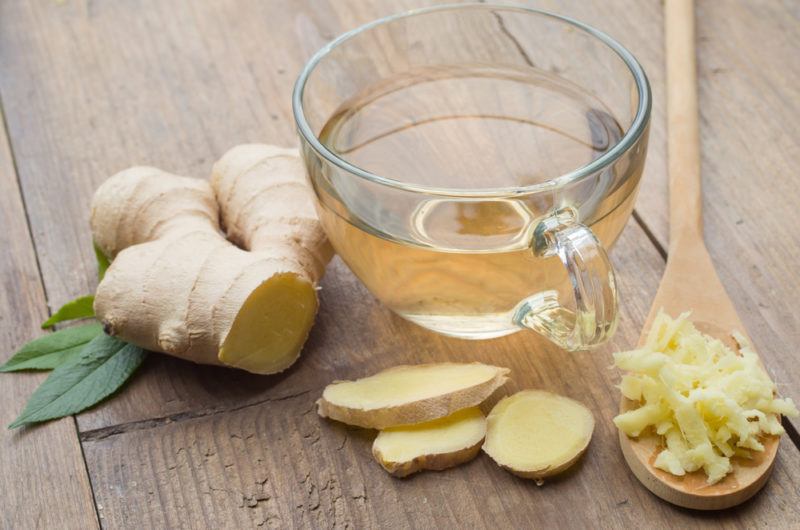
Don’t be fooled by ginger tea. While this drink may have a mild color, the flavor can be much more intense, especially if you’re making the tea fresh.
As the name suggests, ginger tea is either made from fresh ginger root or from powdered ginger. It has the characteristic flavors of ginger, along with the beneficial compounds that can help to settle your stomach and perhaps prevent acid reflux. The tea could even reduce inflammation – an effect that provides various health benefits.
The tea is often made with lemon and honey as extra ingredients. These two additions create a more balanced flavor profile that doesn’t have the harshness that you find with ginger on its own.
Honeysuckle Tea
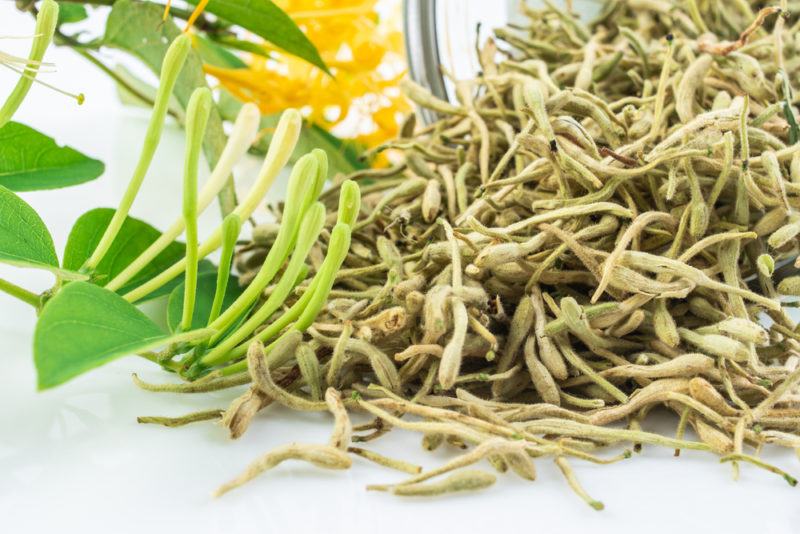
This type of tea is generally made from fresh honeysuckle flowers, although you can sometimes buy products that rely on dried honeysuckle instead. Either way, you end up with a sweet and mild tea that you can make in barely any time at all.
Honeysuckle tea also tastes amazing when it is iced. Adding in some lemon juice and mint leaves is a good way to enjoy iced honeysuckle tea, as these ingredients help to balance out the flavors.
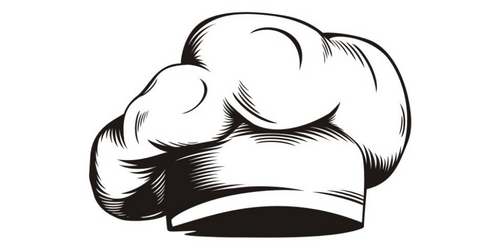
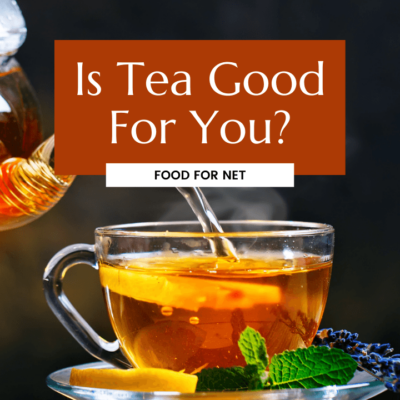
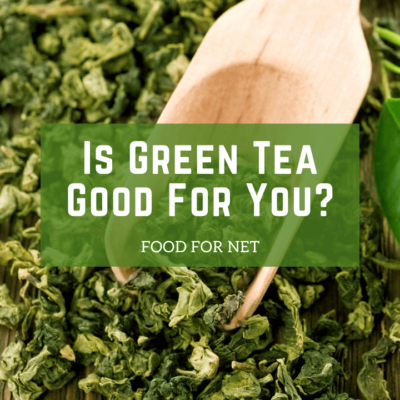
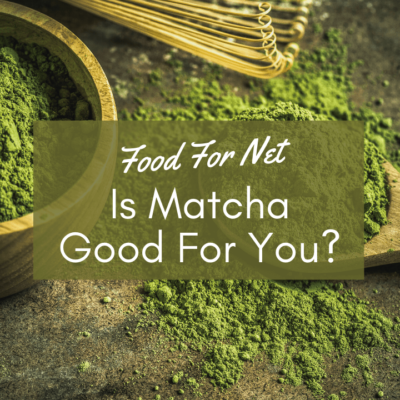








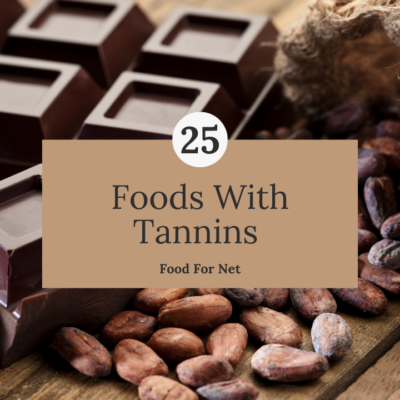
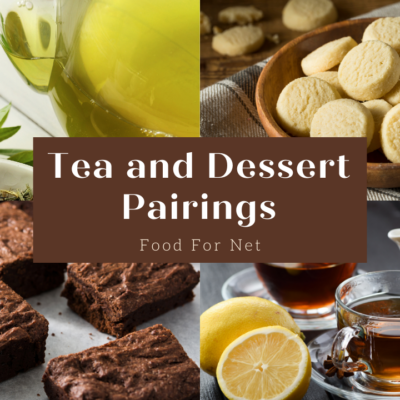



 13 Collagen Rich Foods So That You’re Never Lacking
13 Collagen Rich Foods So That You’re Never Lacking
Leave a Reply